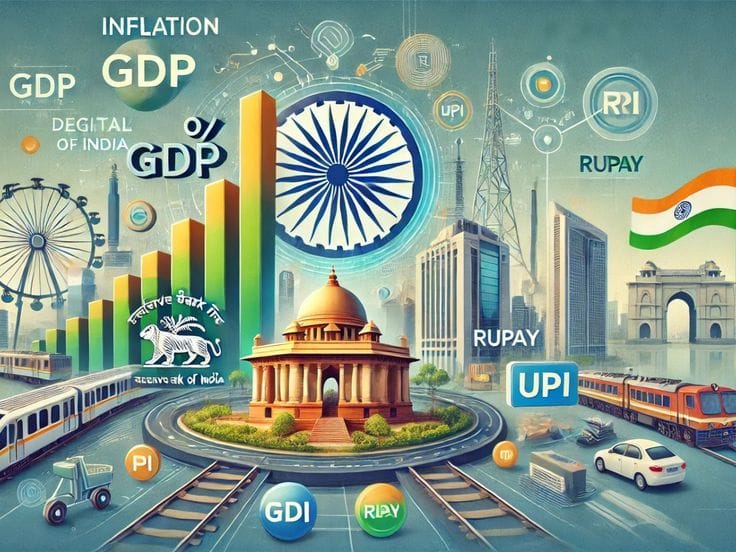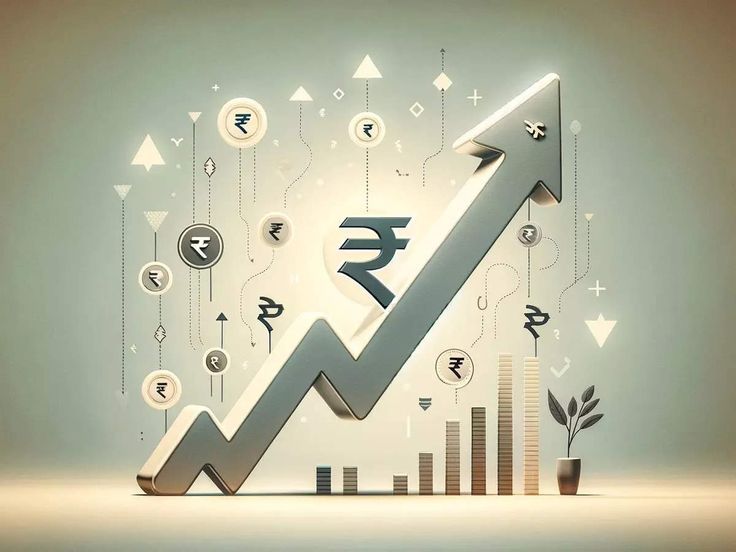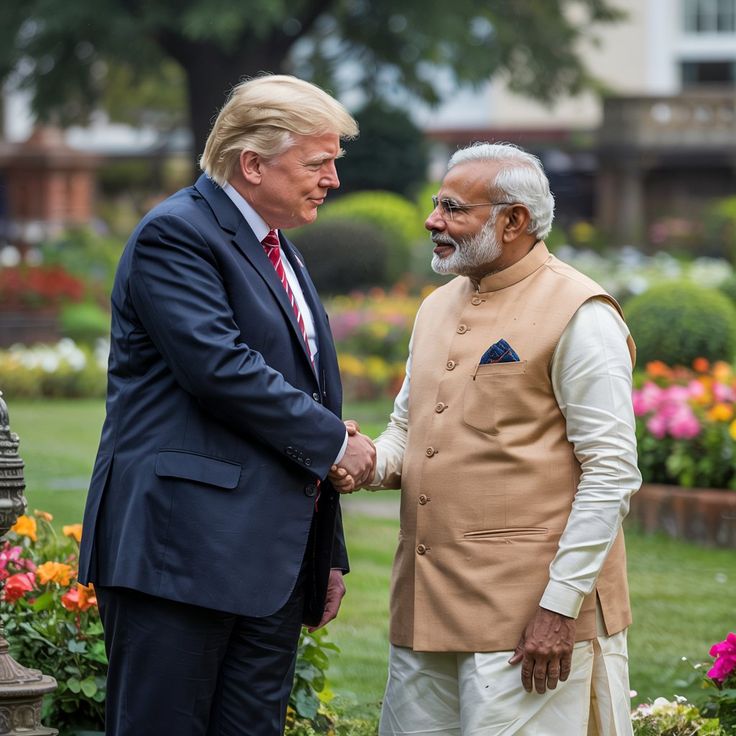In a world where economies rise and fall with geopolitical changes, technological disruptions, and shifting demographics, one country is consistently grabbing headlines for its remarkable growth story: India.
According to a recent EY Economy Watch research (August 2025 edition), India’s GDP might become the second-largest economy in the world by 2030, reaching $20.7 trillion, and possibly $34.2 trillion by 2038. It would even surpass the European Union bloc in terms of sheer economic output, surpassing major global powers like Germany and Japan.
If this trajectory holds true, India will only be behind China in terms of GDP by 2038, while edging out the United States, which has historically been the world’s largest or second-largest economy for decades.
This forecast is not merely a number on paper—it represents a paradigm shift in the global economic order, one that could redefine trade, technology, geopolitics, and the balance of power in the 21st century.
India’s Journey from Developing Nation to Economic Powerhouse
To truly appreciate this projection, one must rewind to where India stood just a few decades ago.
- India was experiencing a serious balance-of-payments problem in the early 1990s, running out of foreign reserves to finance imports for a few weeks.
- GDP per capita was low, poverty levels were staggering, and India’s share in global trade was minuscule.
- Fast-forward to 2025, and India is already the world’s fifth-largest economy, with a GDP of over $4.1 trillion, having overtaken the UK and France.
- What changed in these three decades is not just the size of the economy but also the confidence of its people, reforms in governance, and a demographic advantage that continues to fuel growth.
In the event that India’s GDP reaches $34.2 trillion by 2038, the country’s economy will have grown by about eight times in less than 15 years, which is an incredible increase by any standard.
Key Drivers of India’s Economic Rise
India’s economic trajectory is attributed by the EY report to a number of fundamental strengths and policy improvements. Let’s break them down:
1. Favorable Demographics
With a population of 1.43 billion, India is the nation with the largest population worldwide.
More importantly, over 65% of its population is below the age of 35, making it one of the youngest workforces globally.
By 2030, India is projected to have the largest working-age population, offering a massive advantage over aging economies like China, Japan, and many in Europe.
2. Digital Transformation
With the success of initiatives like Digital India, India has become a leader in digital payments, fintech, and e-governance.
Financial transactions have already been transformed by UPI (Unified Payments Interface), which handles billions of transactions per month.
India’s start-up ecosystem is thriving, producing unicorns across sectors like health tech, edtech, agritech, and AI.
3. Manufacturing and Infrastructure Push
The “Make in India” initiative and Production-Linked Incentive (PLI) schemes have boosted manufacturing in electronics, semiconductors, and renewable energy.
Infrastructure investments in highways, metro projects, smart cities, and high-speed rail are laying the groundwork for faster economic activity.
4. Green Energy Transition
India is targeting net zero emissions by 2070, and in doing so, is heavily investing in solar, wind, and hydrogen energy.
This transition not only reduces dependence on fossil fuels but also positions India as a leader in the global renewable energy market.
5. Structural Reforms
The Goods and Services Tax (GST) was implemented, simplifying India’s indirect taxation system.
Insolvency and Bankruptcy Code (IBC) strengthened investor confidence.
Ongoing reforms in labor laws, land acquisition, and ease of doing business continue to attract foreign investments.
India’s Growth in Numbers
The EY report makes bold but data-backed predictions:
- 2030 GDP Projection: $20.7 trillion
- 2038 GDP Projection: $34.2 trillion
Potential Global Rank: 2nd largest economy (behind China)
Per Capita Income by 2038: Projected to rise from current ~$3,000 to around $20,000, moving India firmly into the high-income nation category.
Such growth would also mean India contributing over 15% of global GDP by 2038, compared to about 7% today.
Global Reactions: How the World Sees India’s Rise
India’s projected rise is not just an economic story but a geopolitical event with global consequences.
United States
The US, which could slip to third place by 2038, will continue to view India as a strategic partner in countering China’s dominance in Asia. Expect deeper economic, defense, and technological collaborations.
China
China remains ahead in GDP terms, but India’s rise as the second-largest economy will make Asia the undisputed center of global economics. The competition may get more intense in terms of technology, trade, and regional power.
Europe and Japan
A declining population and slower growth could become Europe and Japan supporting actors. They are likely to deepen trade partnerships with India to leverage its market.
The Human Side: What This Means for Indians
While trillion-dollar projections excite economists and policymakers, the real question is: How will this impact ordinary Indians?
1. Jobs and Incomes
A $34.2 trillion economy means millions of new jobs across technology, manufacturing, services, and green energy.
Rising incomes will push millions into the middle class, creating a consumption boom.
2. Urban Transformation
Cities like Delhi, Mumbai, Bengaluru, and Hyderabad could transform into global economic hubs, attracting talent and investments.
Smaller cities will evolve into smart cities, narrowing the rural-urban divide.
3. Better Quality of Life
Higher GDP means higher government revenues, which could be invested in healthcare, education, infrastructure, and social welfare.
Access to clean water, electricity, internet, and modern housing is expected to expand significantly.
4. Global Influence
More Indians will be seen in leadership roles across multinational companies, global organizations, and international diplomacy.
Indian culture—Bollywood, yoga, cuisine, and technology exports—will further integrate into the global mainstream.
Challenges on the Road to 2038
Despite the hopeful forecasts, there are still obstacles in India’s path to becoming the world’s second-largest economy:
1. Unemployment and Skill Gaps
With millions entering the job market every year, India needs massive skill development programs to match industry needs.
2. Income Inequality
Rapid growth may widen the gap between the rich and poor unless policies ensure inclusive development.
3. Infrastructure Bottlenecks
India’s infrastructure still has issues with electricity supply, urban congestion, and logistics despite advancements.
4. Climate Change Risks
Rising temperatures, floods, and agricultural risks could slow growth unless addressed with resilient policies.
5. Geopolitical Tensions
Border disputes with neighbors and global conflicts could impact trade and investment flows.
The Global Economic Order in 2038
If India does achieve the projected $34.2 trillion GDP, here’s how the global rankings might look:
1. China – ~$50 trillion
2. India – ~$34.2 trillion
3. United States – ~$32 trillion
4. Japan – ~$7-8 trillion
5. Germany – ~$6-7 trillion
This means for the first time in modern history, two Asian nations will dominate the global economy, signaling a shift of power from the West to the East.
A Nation at the Crossroads
India is currently at a historic crossroads. The choices made in the next decade—on education, technology adoption, climate action, governance, and international diplomacy—will determine whether this ambitious $34.2 trillion dream becomes reality.
For millions of young Indians, this is more than just a report. It is a promise of better opportunities, global recognition, and a chance to shape the future world order.
By 2038, there is no guarantee that it will rank as the world’s second-largest economy. However, India possesses the resilience, diversity, and vitality to make it happen.
The India Century?
The 20th century was often called the American Century, defined by US economic and cultural dominance. The 21st century was expected to be the Chinese Century, with Beijing’s rapid economic rise.
But by 2038, the narrative may evolve into something new: The India Century—where a nation of 1.4 billion people, fueled by its youth, technology, and reforms, rises not just as an economy but as a beacon of growth, democracy, and global leadership.
The world is watching closely. And India is ready.
Related News: Read More




